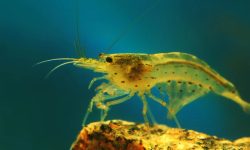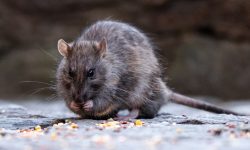Spiders are some of the most diverse predators in the natural world, occupying nearly every habitat on Earth except Antarctica. Their adaptability comes from thousands of hunting strategies that allow them to catch food efficiently, even in harsh or changing environments. Whether living deep in forests, hidden inside tree bark, roaming across deserts, or building webs in the corners of human homes, spiders survive by consuming a wide variety of living prey.
Their diet is entirely carnivorous. Spiders are unable to eat solid food because they lack chewing mouthparts. Instead, their venom liquefies internal tissues, allowing them to drink their meals. This unusual feeding behavior shapes everything about how spiders hunt, where they live, and how they interact with their ecosystems. Understanding what they eat reveals their remarkable skills and the essential roles they play in controlling insect populations.
In the wild, different species rely on different hunting techniques. Web-building spiders catch flying insects effortlessly. Jumping spiders stalk prey with extraordinary vision and speed. Ground-dwelling spiders ambush victims from burrows or cracks in the soil. Because these feeding styles vary so much, their diet also varies widely across habitats and seasons.
Understanding the Spider Diet

Spiders are obligate carnivores, meaning they must consume animal-based food to survive. Unlike omnivores or herbivores, spiders cannot break down plant fibers or solid materials. Their digestive systems function only when prey is liquefied, which explains why all spiders inject venom before feeding. This venom contains powerful enzymes that turn muscles, organs, and tissues into a digestible soup.
Different spiders eat different prey depending on their size, habitat, and hunting structure. Small household spiders often feed on flies, mosquitoes, gnats, and mites. Larger species such as wolf spiders or tarantulas consume bigger prey like lizards, frogs, or even other spiders. Their diet changes based on what is available, making them incredibly flexible predators in both natural and human environments.
Hydration is another key factor in their diet. Spiders rarely drink water directly. Instead, they absorb almost all of their moisture from their prey. Insects and worms provide enough hydration for the spider to survive even in dry climates. This is why spiders thrive in attics, basements, deserts, or abandoned structures with little or no water supply.
12 Natural Foods Spiders Rely on to Stay Alive
Houseflies
Houseflies are one of the easiest and most common food sources for spiders living near humans. Their fast wingbeats often lead them directly into spider webs, where they are quickly trapped and immobilized. This makes them essential prey for web-building species such as cellar spiders and orb-weavers that rely heavily on airborne insects.
Once trapped, the spider wraps the fly with silk or injects venom immediately. Venom breaks down the fly’s internal organs into liquid, allowing the spider to consume nutrients effortlessly. This makes houseflies a dependable energy source for maintaining web strength and daily hunting activities.
Because houseflies reproduce rapidly, spiders help reduce their numbers naturally. By consuming flies that carry bacteria or disease, spiders indirectly help maintain healthier household environments.
Mosquitoes
Mosquitoes are soft-bodied insects, making them ideal prey for many spiders. Their thin exoskeleton allows venom to work quickly, providing a fast and easily digestible meal. Web-building spiders often catch mosquitoes that hover near porch lights or windows at night.
Jumping spiders and small ground-dwelling species also ambush resting mosquitoes on walls, ceilings, and vegetation. These spiders rely on sharp eyesight and quick reflexes to capture them before they can fly away. The moisture from mosquitoes provides hydration essential for survival in dry areas.
In warmer seasons when mosquitoes appear in large numbers, they become a primary food source for both juvenile and adult spiders, helping them grow rapidly and maintain healthy energy levels.
Moths
Moths frequently fly into spider webs at night, making them a major component of the spider diet. Their large wings may shed scales, but they still provide a substantial meal for spiders of all sizes. Species like orb-weavers are particularly successful at catching them due to their large, sticky webs.
The high fat content found in moth bodies offers long-lasting energy. This is especially important for female spiders that must produce large egg sacs or rebuild webs daily. The nutrient density of moths allows spiders to survive long periods without food.
Moths also appear in greater numbers near artificial lights, increasing the likelihood of them getting trapped. This connection makes spiders extremely effective nighttime predators around homes and gardens.
Ants
Ants are dangerous prey because they live in colonies and can fight in groups. However, many spiders still hunt them due to their high nutritional value. Ground-dwelling spiders lurk near ant trails, striking quickly before the ant can summon reinforcements.
Spiders inject venom in a split second to immobilize the ant. Their venom prevents the ant from releasing alarm pheromones, ensuring the spider remains safe. Ants offer dense proteins and minerals that support spider growth and muscle development.
Some specialized spiders, like ant-eating spiders (Zodariidae), have evolved to hunt ants exclusively. These species exhibit remarkable agility and precision, proving that spiders can adapt to nearly any dietary niche.
Beetles (Small Species)
Small beetles with soft shells are perfect prey for spiders that cannot penetrate harder exoskeletons. These beetles often wander into webs accidentally, giving the spider an effortless meal. Their slow movements make them easy targets on the ground as well.
The bodies of beetles contain essential minerals and fats that assist spiders during molting cycles. Molting requires significant energy, so beetles help spiders prepare for this demanding biological process. Young spiders benefit especially from beetle nutrients.
Because beetles inhabit nearly every environment, they provide spiders with reliable prey year-round. Even during dry seasons, beetles remain active in soil and leaf litter where spiders can hunt efficiently.
Caterpillars
Caterpillars are nutrient-rich prey thanks to their high moisture and protein content. Their soft bodies make them easy to pierce, allowing spiders to feed without expending too much energy. Larger spider species like orb-weavers and wolf spiders often catch caterpillars resting on leaves.
Caterpillars move slowly while feeding, making them vulnerable to ambush predators. Spiders take advantage of this by attacking from above or waiting near host plants. Once caught, the caterpillar’s juices provide hydration and sustained nourishment.
By consuming caterpillars, spiders help prevent excessive leaf damage in forests and gardens. Their role as natural pest controllers is vital for ecosystem balance and healthy plant growth.
Grasshoppers (Juveniles)
Young grasshoppers are small enough for many spiders to overpower. Wolf spiders, fishing spiders, and tarantulas often target juvenile grasshoppers as they hop across open ground. These hunts show the spider’s speed, strength, and ability to track prey.
The high protein levels in grasshopper bodies help spiders maintain stamina for long hunts and territorial defense. Grasshoppers also contain moisture that supports hydration during warm months.
Because grasshopper populations can grow rapidly, spiders help reduce agricultural damage by feeding on juveniles before they reach adulthood.
Crickets
Crickets provide one of the most satisfying meals for larger spiders. Their size offers significant nourishment, allowing spiders to go several days without needing additional food. Tarantulas and wolf spiders are particularly fond of crickets due to their rich protein and fat content.
Crickets are strong jumpers, which stimulates a spider’s hunting instincts. Ground-dwelling spiders use vibration signals to detect crickets approaching, delivering a fast, accurate strike to capture them. This makes cricket hunting an essential part of survival for many predatory spider species.
In the wild, crickets appear in grasslands, forests, abandoned logs, and under stones, giving spiders multiple opportunities to hunt them across a range of habitats.
Spiders (Cannibalism)
Cannibalism is common among spiders, especially when food is scarce. Larger species consume smaller ones to obtain quick nourishment with minimal energy expenditure. Some spiders actively hunt their own species, especially in overcrowded environments.
Female spiders are known to eat males after mating. This behavior provides females with nutrients needed to produce eggs and protect their offspring. Although not universal, it is an effective survival strategy in nutrient-poor habitats.
Spiderlings also compete for space and food. When resources are low, stronger spiderlings may consume weaker siblings. This ensures that only the fittest individuals survive to adulthood.
Small Frogs (Large Species Only)
Large spider species such as tarantulas occasionally catch tiny frogs in tropical environments. These frogs must be very small — usually only recently transformed from tadpoles. Because frogs are quick, the spider must strike at precisely the right moment.
Once captured, the frog provides a nutrient-rich meal full of proteins and moisture. This helps large spiders maintain muscle mass and energy reserves, which are needed for molting and burrow maintenance.
Although rare, frog-eating behavior shows the remarkable adaptability of spiders. It proves that spiders can take advantage of any available prey if it fits within their size range.
Small Lizards
Some of the world’s largest spiders, including huntsman spiders and tarantulas, occasionally feed on small lizards. These hunts require perfect timing and strong venom because lizards are fast and can escape easily.
The meal offers powerful nourishment. Lizard flesh contains fats and proteins that sustain spiders for long periods. These nutrients support reproduction, long-distance travel, and growth in adult spiders.
Lizard predation is most common in tropical regions where both lizards and large spiders are abundant. These encounters display the full strength and versatility of the spider’s hunting ability.
Worms
Worms are ideal prey for small spiders that live in soil, under logs, or inside leaf litter. Their soft bodies are easy to pierce, and their slow movement allows young spiders to practice hunting safely.
Worms are packed with moisture, helping spiders stay hydrated during dry seasons. This benefit is especially important for juvenile spiders that need constant water to survive early development stages.
The nutrient-rich bodies of worms allow spiders to grow quickly and molt successfully. Worms also appear after rainfall, making them a reliable food source during wet months.
FAQs
Do spiders eat plants or vegetables?
No. Spiders are strict carnivores and cannot digest plant matter under any circumstances.
How often do spiders need to eat?
A healthy spider may eat every few days, but many species can survive weeks or months without food.
Do spiders drink water?
Most hydration comes from prey, though some spiders may drink dew or small droplets if available.
Are spiders beneficial for homes and gardens?
Yes. Spiders naturally control pests like flies, mosquitoes, gnats, roaches, and other insects.
Do spiders prefer fresh or dead prey?
Most spiders only eat living prey, but some scavenger species may consume recently dead insects.
Why do some spiders eat other spiders?
Cannibalism prevents overcrowding, reduces competition, and provides important nutrients when food is scarce.
What do baby spiders eat?
Spiderlings eat tiny insects such as fruit flies, mites, springtails, and small ants.
Final Thoughts
Spiders rely on a wide variety of foods — from houseflies and mosquitoes to caterpillars, crickets, and even small lizards. Their unique feeding habits allow them to thrive in nearly every environment on the planet. By understanding what spiders eat, we gain a deeper appreciation for their role in nature. They help control insect populations, maintain ecological balance, and support healthy ecosystems in forests, gardens, wetlands, and homes.






